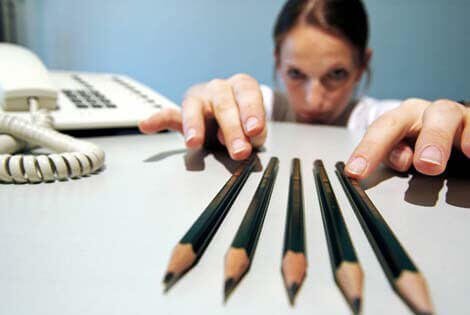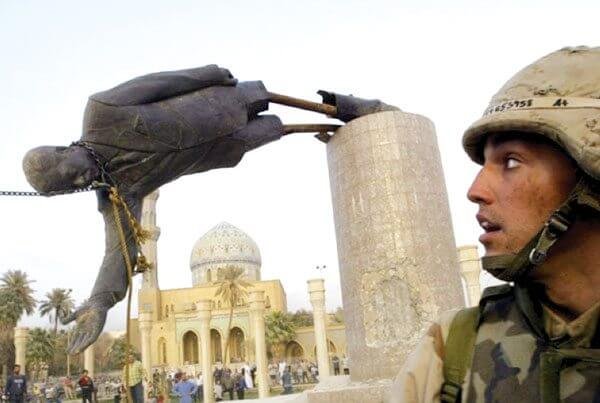Framing Theory and Media Manipulation

Framing theory belongs to a group of theories and ideas in the world of sociology and communication sciences. It’s a potential explanation as to why we focus our attention on some parts of a given reality and not on others. It also explores the question of why most people end up seeing reality in one way and not another.
People have already started to apply framing theory to the field of mass communication. The basic idea here is that the media shows us a reality that has been “framed”. In other words, it only shows us certain things and hides others.
“When people learn no tools of judgment and merely follow their hopes, the seeds of political manipulation are sown.”
-Stephen Jay Gould-
Thus, when they advertise something as the “truth”, it’s really just a part of that, the part that fits in their frame. They do this on purpose to draw people’s attention to a specific thing or things. They’re basically shaping society to look at things in a specific way.
Precursors to framing theory
One of the first people to use “frames” in this context was psychologist Gregory Bateson. In 1955, he came up with the idea that frames were the parts of our mind that helped us differentiate between things.
We came up with boundary lines to tell things apart. For example, you know a pencil isn’t a thermometer due to the specific characteristics that define it.

In 1974, sociologist Erving Goffman said that reality itself wasn’t the most important thing, but instead the way we interpret it. He established the idea that we always understand information in a specific way and not another based on how it’s presented to us.
For example, if you make a frame for “dangerous people”, anyone you list in it (whether or not they really belong on the list or not), will seem like a bad person. If you put a hippie on the list, someone who doesn’t know much about that type of person will probably assume that they’re dangerous. The frame determines the interpretation.
Barbara Tuchman finally brought this idea to communication sciences. In 1978, she said that the news was its own kind of frame. That frame comes from the medium (TV, print, etc.) and the person reporting it. From there, news shape the way you see reality, even if it doesn’t line up with the truth.
Mass communication processes
According to framing theory, many different processes are involved in mass communication:

- Picking out certain aspects of reality.
- Focusing mostly on them in a report.
- Defining a problem related to those specific things.
- Putting forth an interpretation that points out the cause of the problem.
- Morally evaluating the problem, putting forth solutions, or recommending potential courses of action.
Framing theory also says that these processes happen in different stages:
- Company framing. This is when journalists or reporters establish how exactly they’re going to inform the public. The interests of the company that finances the news play a big role here, and so do the reporter’s personal interests.
- News framing. What’s said and how it’s said. Reporters figure out where to put their emphasis, how much information they’re going to give, and the way they’ll interpret each aspect.
- Audience framing. How the other two frames interact with people’s pre-existing worldviews (frames). The basic goal is for the first two to line up with it.
Media manipulation
The big thing to understand about all this is that the way the media presents a certain story isn’t necessarily true. As a society, we need to be aware of how important it is to be critical with the information we receive.
Here’s an example of why. Think about the US invasion of Iraq. The supposed cause was that the US had detected a nuclear weapons factory that the Iraqi government would use against innocent people. Then, they made it seem heroic for US troops to arrive by sharing photos of thousands of people tearing down the statue of Saddam Hussein.

What does this image prove? Nothing but the fact that thousands of people were against his regime. However, they didn’t speak for all of Iraq. That’s how the media presented it to us. We also learned later on that the nuclear weapons factory never even existed. And that many Iraqis were against the invasion.
Despite all that, many people still probably look at the whole thing from that heroic lens. The media’s frame became their own.
Framing theory belongs to a group of theories and ideas in the world of sociology and communication sciences. It’s a potential explanation as to why we focus our attention on some parts of a given reality and not on others. It also explores the question of why most people end up seeing reality in one way and not another.
People have already started to apply framing theory to the field of mass communication. The basic idea here is that the media shows us a reality that has been “framed”. In other words, it only shows us certain things and hides others.
“When people learn no tools of judgment and merely follow their hopes, the seeds of political manipulation are sown.”
-Stephen Jay Gould-
Thus, when they advertise something as the “truth”, it’s really just a part of that, the part that fits in their frame. They do this on purpose to draw people’s attention to a specific thing or things. They’re basically shaping society to look at things in a specific way.
Precursors to framing theory
One of the first people to use “frames” in this context was psychologist Gregory Bateson. In 1955, he came up with the idea that frames were the parts of our mind that helped us differentiate between things.
We came up with boundary lines to tell things apart. For example, you know a pencil isn’t a thermometer due to the specific characteristics that define it.

In 1974, sociologist Erving Goffman said that reality itself wasn’t the most important thing, but instead the way we interpret it. He established the idea that we always understand information in a specific way and not another based on how it’s presented to us.
For example, if you make a frame for “dangerous people”, anyone you list in it (whether or not they really belong on the list or not), will seem like a bad person. If you put a hippie on the list, someone who doesn’t know much about that type of person will probably assume that they’re dangerous. The frame determines the interpretation.
Barbara Tuchman finally brought this idea to communication sciences. In 1978, she said that the news was its own kind of frame. That frame comes from the medium (TV, print, etc.) and the person reporting it. From there, news shape the way you see reality, even if it doesn’t line up with the truth.
Mass communication processes
According to framing theory, many different processes are involved in mass communication:

- Picking out certain aspects of reality.
- Focusing mostly on them in a report.
- Defining a problem related to those specific things.
- Putting forth an interpretation that points out the cause of the problem.
- Morally evaluating the problem, putting forth solutions, or recommending potential courses of action.
Framing theory also says that these processes happen in different stages:
- Company framing. This is when journalists or reporters establish how exactly they’re going to inform the public. The interests of the company that finances the news play a big role here, and so do the reporter’s personal interests.
- News framing. What’s said and how it’s said. Reporters figure out where to put their emphasis, how much information they’re going to give, and the way they’ll interpret each aspect.
- Audience framing. How the other two frames interact with people’s pre-existing worldviews (frames). The basic goal is for the first two to line up with it.
Media manipulation
The big thing to understand about all this is that the way the media presents a certain story isn’t necessarily true. As a society, we need to be aware of how important it is to be critical with the information we receive.
Here’s an example of why. Think about the US invasion of Iraq. The supposed cause was that the US had detected a nuclear weapons factory that the Iraqi government would use against innocent people. Then, they made it seem heroic for US troops to arrive by sharing photos of thousands of people tearing down the statue of Saddam Hussein.

What does this image prove? Nothing but the fact that thousands of people were against his regime. However, they didn’t speak for all of Iraq. That’s how the media presented it to us. We also learned later on that the nuclear weapons factory never even existed. And that many Iraqis were against the invasion.
Despite all that, many people still probably look at the whole thing from that heroic lens. The media’s frame became their own.
This text is provided for informational purposes only and does not replace consultation with a professional. If in doubt, consult your specialist.







